

Fw 189A-2

In 1937 the RLM issued a specification for a tactical reconnaissance aircraft carrying three crew members, offering all around defensive cover and possessing a higher performance than anything previous in this category. The Fw 189 was Kurt Tank's answer to that specification. The prototype flew in July of 1938, 15 months after an order was placed for prototypes. After testing had been completed production orders were received for the A-1 model. Armament consisted of 2 MG 17 machine guns in the wing roots and 2 MG 15 machine guns on flexible mounts. Racks were provided under the wings for 110-lb bombs. The A-1 was succeeded on the production lines by the A-2 in mid 1941 which differed from the A-1 in having twin machine guns in the two flexible positions. Used predominately on the Eastern front, "The flying Eye" was to prove to be supremely versatile, universally popular with its pilots and one of the most reliable aircraft ever to see Luftwaffe service. A few were even fitted with radar and used as night fighters on the Eastern front.
The Kit
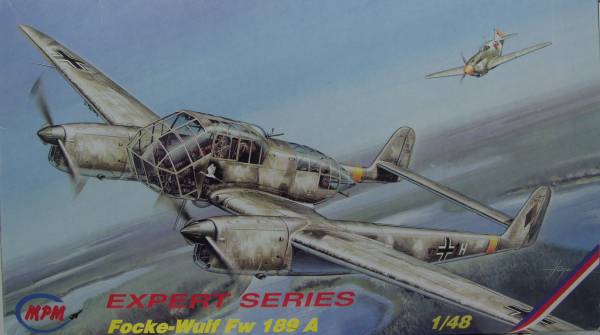
The MPM kit comes in the dreaded end flap box packaging with attractive artwork on the front of the box. Inside all of the color parts are in one bag with a separate bag for the clear parts. The decals are also bagged separately and enclosed with them are a small photoetch fret and a clear film for the instrument panel instruments. Having all the main parts in one bag is usually an invitation for surface damage but they fit so tight in the bag they couldn't move much and no significant damage was found.
The parts are molded in two colors. The first color is a very dark gray and the other is a very light gray, almost white in color. The light gray parts comprise the wing center sections, booms, tail, engines and props while the dark gray is the balance of the parts. The surface is reasonably smooth and features recessed panel lines and fastener detail. The panel line are fine and uniform and my only complaint in that area is that the recesses defining the control surfaces are not deep enough. All of the parts show moderate amounts of flash with the small parts being worse, some being quite heavily flashed. I found no sink holes but some of the ejector pin towers will need to be removed from the backs of some of the parts before assembly. The usual locations for ejector pin marks such as landing gear struts and insides of gear doors were free of them. The demarcation lines for one of the ailerons had some globs in it that will require some clean up. The smaller parts also exhibit rather heavy parting lines which adds to the drudgery of clean them up and trying to make round parts look round. All of the flight control surfaces are fixed and the fabric areas are nicely done, not over done as usually the case.
The interior has a fairly high level of detail which it needs considering a great deal of it will be seen when the kit is complete. The inside of the fuselage has structural details and there are all sorts of boxes, map case, ammo cans and other detail to attach here and there to make things look busy. The pilots seat does not have a harness or belts and these are not included on the photoetch sheet either. The wheel wells are boxed in and show internal detail and the landing gear is nicely done. Altogether there are 118 parts in two shades of gray.
The kit includes some resin parts. These are molded in a tan colored resin and consist of a side console for the pilots position, two machine guns and the pilots control column and an instrument box of some sort. They have some flash and should look OK although the console seemed a little lacking in detail. The barrels for the machine guns were both badly warped and would probably be best replaced with metal parts. Altogether there are 7 resin parts.
The kit also has a fret of photoetch which includes three instrument panels with film for the instruments and a number of other internal and external details. There are total of 23 photoetch parts.
The clear parts are thin and nice and clear which is a good thing considering how much there is, it has nice raised frame lines. There is a total of 7 clear parts. The grand total for the kit is 155 parts which is a bunch for a relatively small aircraft. See the photos below for the kit parts.
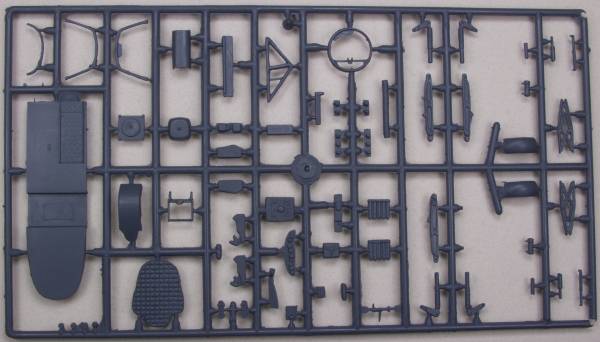
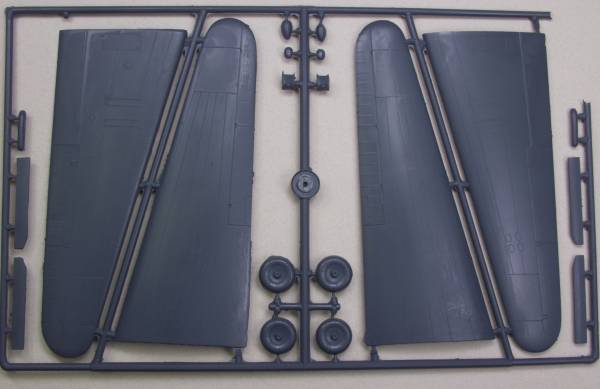
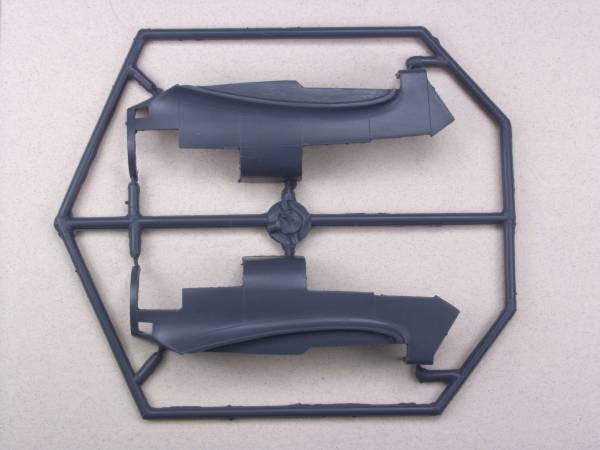
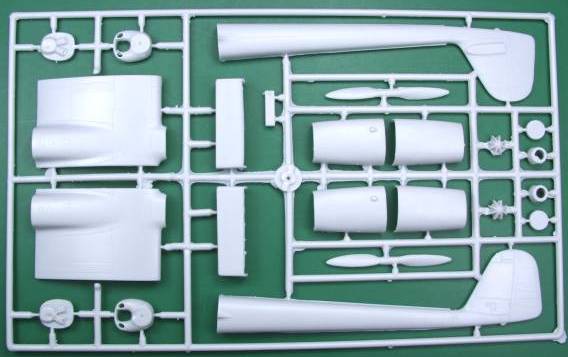
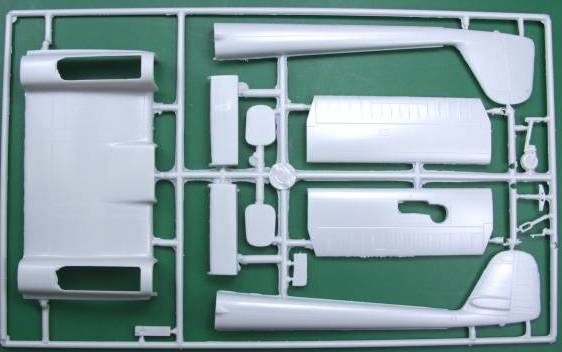
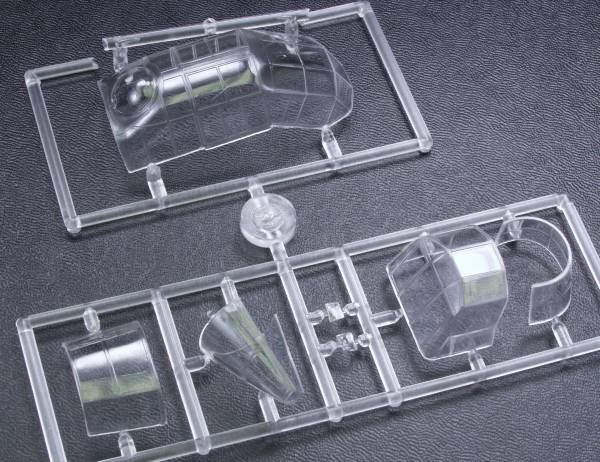
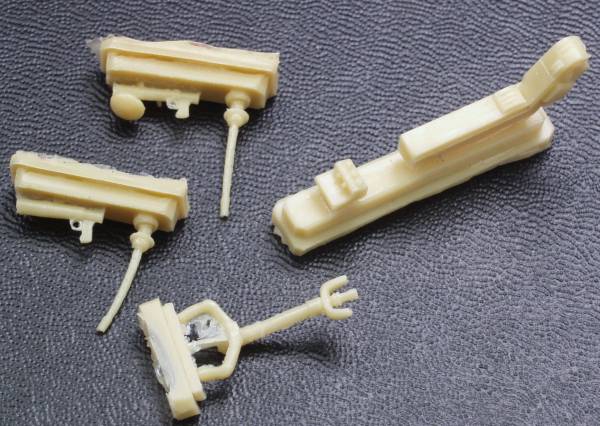
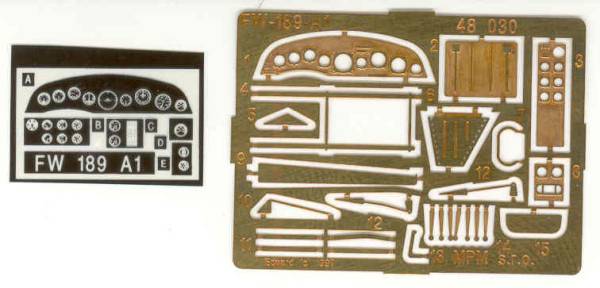
The decals include marking for two aircraft, one of which is Hungarian. They include wing walk lines and a few stencils and include swastikas, albeit the assemble them your self variety. The decals appear thin and opaque but a few but not all were a bit off register. See below.
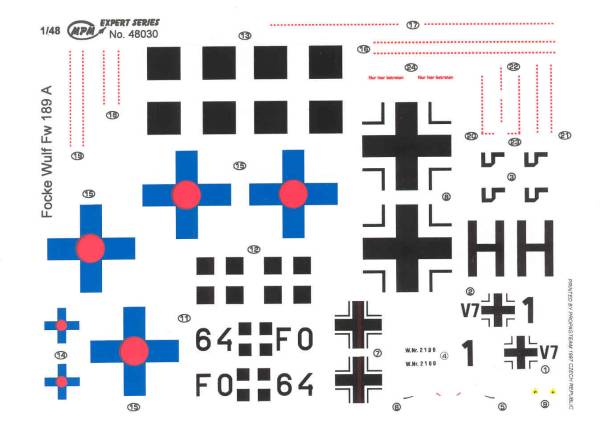
Conclusions
This is a limited run style kit and as such has no alignment pins. That in itself wouldn't be that much of a problem but all of the parts are also butt joined with no alignment features what so ever. This could make getting all the parts lined up the way they need to be a bit of a chore, especially the booms and tail assembly and the outer wings to the central wing / fuselage assembly. As is usually the case much trial fitting will be necessary to insure a nice finished model. Due to the level of flash, parts clean up will require a good bit time. I did get a mask set for this kit, hopefully it will make masking the dozens of window panes more bearable. With a little extra work the interior can be made into a real show piece. Due to the level of complexity I can only recommend this to kit to experienced modelers.
Links to kit build or reviews
Reviews and /or builds can be found here and here.
References
"Warplanes of the Third Reich" by William Green
Updated 5/12/08